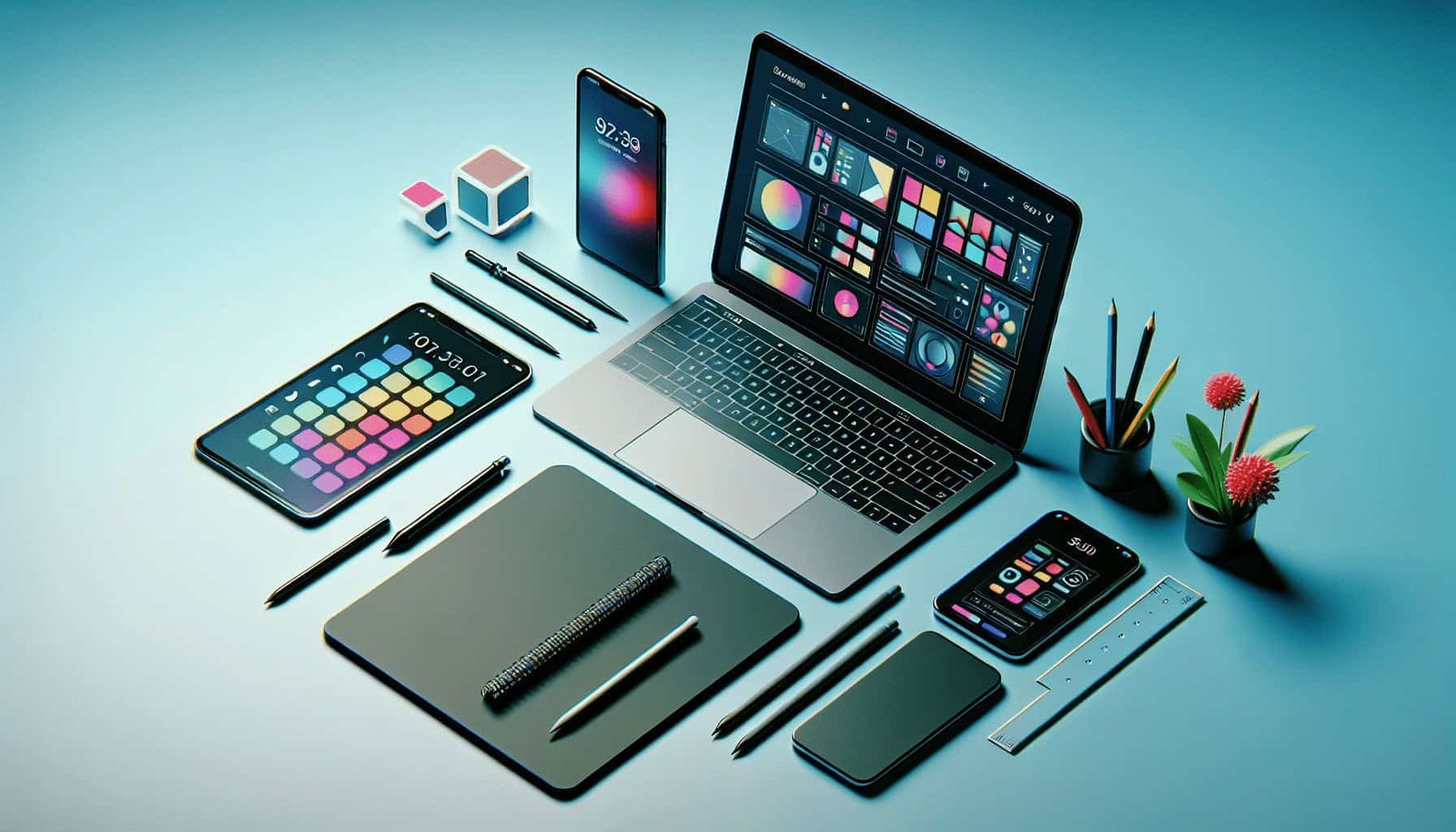Have you ever wondered what it takes to be a UX/UI designer working remotely for mobile apps? Well, you’re not alone. Many aspiring and current designers find themselves questioning how to adapt their skills to the remote work environment that is now becoming commonplace. As a UX/UI designer focusing on mobile applications, your ability to effectively design interfaces that are not only visually appealing but also user-friendly can make a significant difference in how users interact with mobile apps. Let’s explore what it truly means to be a remote UX/UI designer for mobile apps.
Understanding the Role of a UX/UI Designer
Defining UX/UI Design
Before we dive deeper, it’s crucial to understand what UX/UI design entails. UX, or User Experience, refers to the overall experience a user has when interacting with a product or service. The goal is to create a seamless, efficient, and satisfying experience for the end-user. On the other hand, UI, or User Interface, focuses on the design, look, and feel of the product interface. This includes typography, colors, buttons, and images. Together, UX and UI create a complete design process that ensures not only functionality but also aesthetic appeal.
The Importance of UX/UI in Mobile Apps
Mobile applications are omnipresent in today’s digital world. The design of these applications can determine their success or failure. A well-executed mobile app offers a seamless user experience, encouraging engagement and loyalty. As a UX/UI designer, your role is to balance functional solutions with appealing designs that cater to the needs and preferences of mobile users.
The Shift to Remote Work
Why Remote?
The shift to remote work in design fields, like many industries, has been accelerated by global events. Remote work provides the flexibility to collaborate with teams and clients from around the world, opening up opportunities that were once geographically restricted. For companies, this means access to a broader talent pool, while for designers like you, it translates to more diverse project opportunities and greater flexibility in work-life balance.
Challenges and Benefits
Working remotely as a UX/UI designer has its challenges and benefits. On the challenge side, communication can sometimes be less spontaneous, and the lack of physical interaction can hinder collaborative creativity. However, the benefits often outweigh the difficulties. You gain greater flexibility, reduce commute time, and have the opportunity to work in an environment of your choosing, which can be tailored to enhance your productivity and creativity.

Skills Required for a Remote UX/UI Designer
Technical Skills
To thrive as a remote UX/UI designer, certain technical skills are non-negotiable. Proficiency in design software such as Adobe XD, Sketch, or Figma is essential. Additionally, a good understanding of wireframing tools, prototyping, and responsive design principles will be invaluable. Being able to transform complex problems into intuitive design solutions is at the heart of your role.
Soft Skills
Beyond technical prowess, soft skills are equally important. Communication is key in remote work settings; you need to express your ideas clearly and collaborate effectively with team members and clients. Time management and self-discipline are vital in maintaining productivity without the structured environment of an office. Lastly, a keen eye for detail will ensure the quality and precision of your designs.
Tools and Technologies
Design Tools
Your choice of design tools can significantly influence your workflow efficiency. Popular options like Figma, Sketch, and Adobe XD offer collaborative features that are especially useful in remote settings. Consider tools that integrate smoothly with other platforms you may use, enhancing your team’s collaborative efforts.
| Tool | Features | Integration |
|---|---|---|
| Figma | Real-time collaboration, cloud-based storage, prototyping features | Slack, Jira, Asana |
| Sketch | Vector editing, prototyping, extensive plugins | Zeplin, Abstract |
| Adobe XD | Interactive prototypes, voice commands, integration with Adobe products | Photoshop, Illustrator |
Collaboration Tools
Remote work requires effective collaboration, which is enabled by various online tools. Platforms like Slack or Microsoft Teams facilitate communication, while Asana or Jira help manage and track project tasks. InVision is another great tool for prototyping and sharing designs with clients and team members.

Designing for Mobile Apps
Understanding User Needs
Designing for mobile is different from web or desktop applications due to screen size, touch interactions, and the need for quick, efficient use while on the go. Understanding the user’s context is essential. Are they using the app while walking or during a commute? Are there accessibility considerations? Your design must adapt to these scenarios, providing an optimal experience regardless of how or where it is used.
Responsive Design
Mobile apps need to be responsive, meaning they should work seamlessly on different devices and screens. This involves creating flexible layouts, employing scalable vector graphics, and ensuring the app is compatible with various screen orientations and resolutions.
Navigation and Usability
Mobile users expect quick access to the information they need. Efficient navigation, clear call-to-action buttons, and an intuitive layout are crucial. Designs should minimize the number of screen taps and avoid clutter, focusing instead on clean, purposeful interfaces that guide users effortlessly through the app.
The Design Process
User Research
The design process for mobile apps often begins with user research. This includes understanding target audience behaviors and preferences through surveys, interviews, and data analysis. Gaining insights into user needs and pain points helps inform your design decisions.
Wireframing and Prototyping
Once research is complete, the next step typically involves creating wireframes or low-fidelity representations of your app design. Prototyping follows, allowing you to develop interactive models that demonstrate the app’s functionality. This step is essential for testing and gathering feedback, leading to iterative improvements.
Testing and Iteration
Testing is a critical stage in the design process. User testing allows you to evaluate the app’s functionality, usability, and overall experience with real users. Based on feedback, the design undergoes refinements to ensure it meets user needs and expectations. Iteration continues until the app achieves the desired balance between aesthetics and user satisfaction.

Career and Opportunities
Career Path
The career path for a remote UX/UI designer can be varied and rewarding. Starting as a junior designer, you may progress to roles such as UX/UI lead or design manager, overseeing teams and leading projects. Continuous learning and skill development often accompany a successful design career.
Freelancing vs. Full-Time Position
Whether to freelance or work full-time is a decision many remote designers face. Freelancing offers flexibility and the opportunity to work on diverse projects but lacks the stability of a full-time position. Conversely, being part of a full-time team may provide a sense of community and career progression that freelancing does not.
Networking and Growth
Building a Portfolio
A robust portfolio is essential for any aspiring UX/UI designer. Showcase your best work, highlighting projects that demonstrate your design process, problem-solving skills, and adaptability. Remember, your portfolio should not just display final designs but also document the journey and thought process behind each project.
Professional Development
Staying up-to-date with industry trends is crucial for professional growth. Participate in webinars, join design communities, and attend workshops or online courses. Continual learning not only enhances skill sets but also keeps you inspired and motivated.

Conclusion
Embarking on a journey as a remote UX/UI designer for mobile apps is both exciting and challenging. The key lies in understanding the unique aspects of mobile design, continually honing both your technical and soft skills, and staying adaptable in an ever-evolving digital landscape. By leveraging the right tools and fostering a collaborative remote work environment, you can create impactful designs that resonate with users around the world. Whether you choose to freelance or join a team, your role as a designer will contribute significantly to shaping the future of mobile user experiences.
